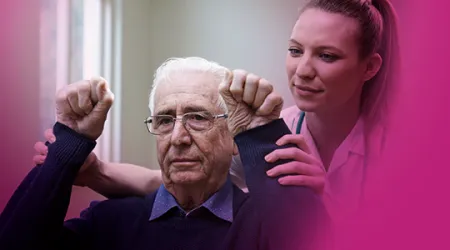What causes the disease?
Smoking, high blood pressure (hypertension), hardening of the arteries (arteriosclerosis), alcohol use, and underlying diseases which can increase the risk of developing brain aneurysms. Some people may be genetically prone to developing aneurysms which is why your physician will be interested in your family history.

Can hemorrhagic strokes be prevented?
While a hemorrhagic stroke cannot always be prevented, you can lower your chances of having a hemorrhagic stroke by:
- Getting treatment for high blood pressure – This is very important, because untreated high blood pressure is a common cause of hemorrhagic strokes. Treatment can involve lifestyle changes, diet changes, and/or medication.
- Not smoking.
- Not using illegal drugs.
If an abnormal blood vessel was the cause of the stroke, surgery can sometimes be performed to prevent it from bleeding again.

Follow-up and recovery
Some people recover from a stroke without any long-term impact to their quality of life or with only minor impact. However, many have seriously reduced functionality after a stroke. For example, they might be unable to speak or feed themselves, or they might be unable to move parts of their body. Specialists, such as physical therapists and speech therapists, can help.

Diagnosis
- Head CT and MRI scan: The importance of CT scanning in the early stage of onset is to exclude cerebral hemorrhage, but no abnormal findings will be found at early stage of ischemic stroke. Low-density changes can be detected 24–28 hours after onset of disease. MRI can identify disease 4 hours after onset.
- Cerebrovascular examination: Digital subtraction angiography (DSA), CT or MR angiography can show the location and nature of the stroke and help doctors to evaluate the disease before performing treatment.
- Transcranial Doppler (TCD): The degree of blockage of the cerebral vessels can be determined by the velocity and direction of blood flow.




